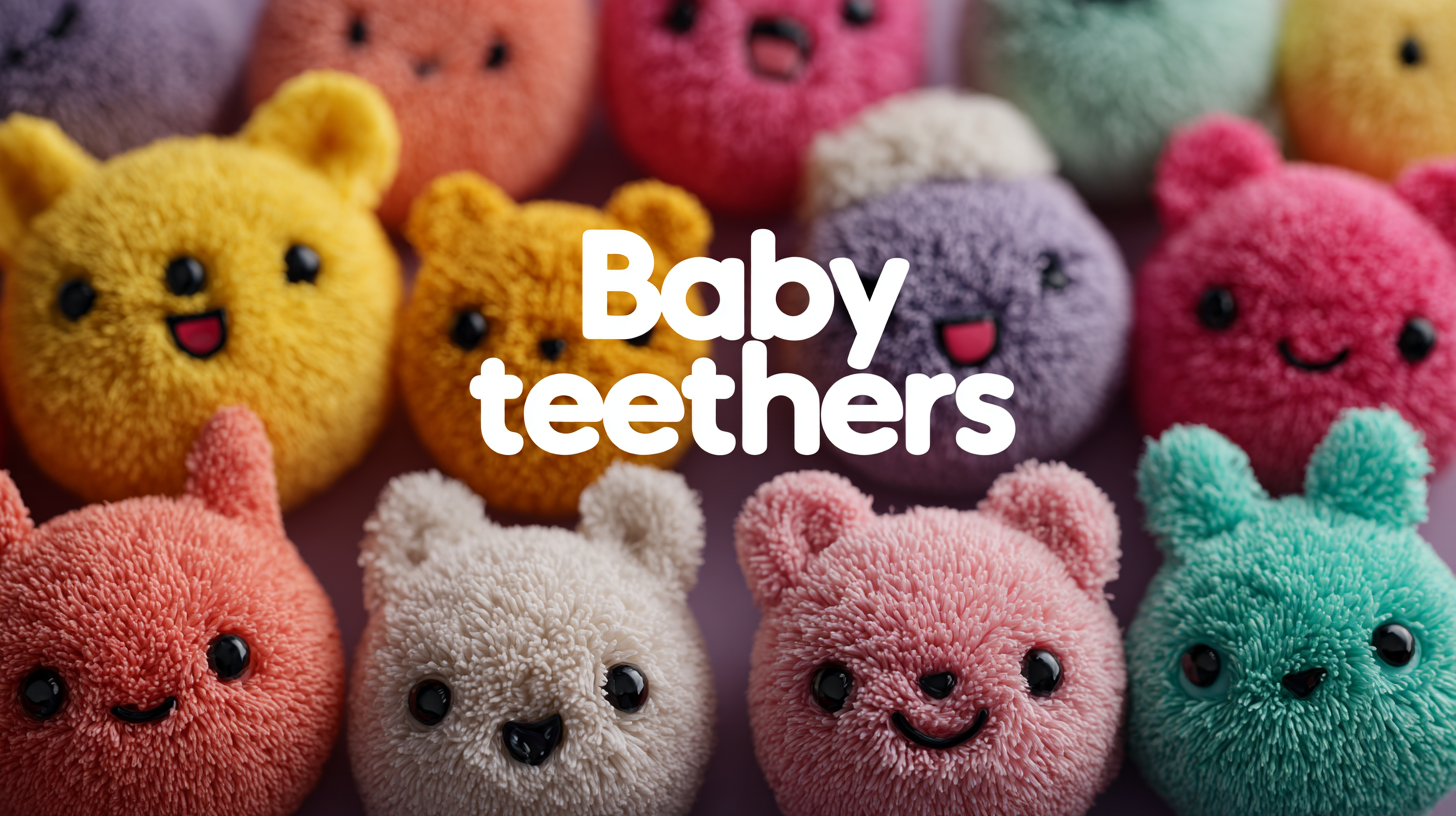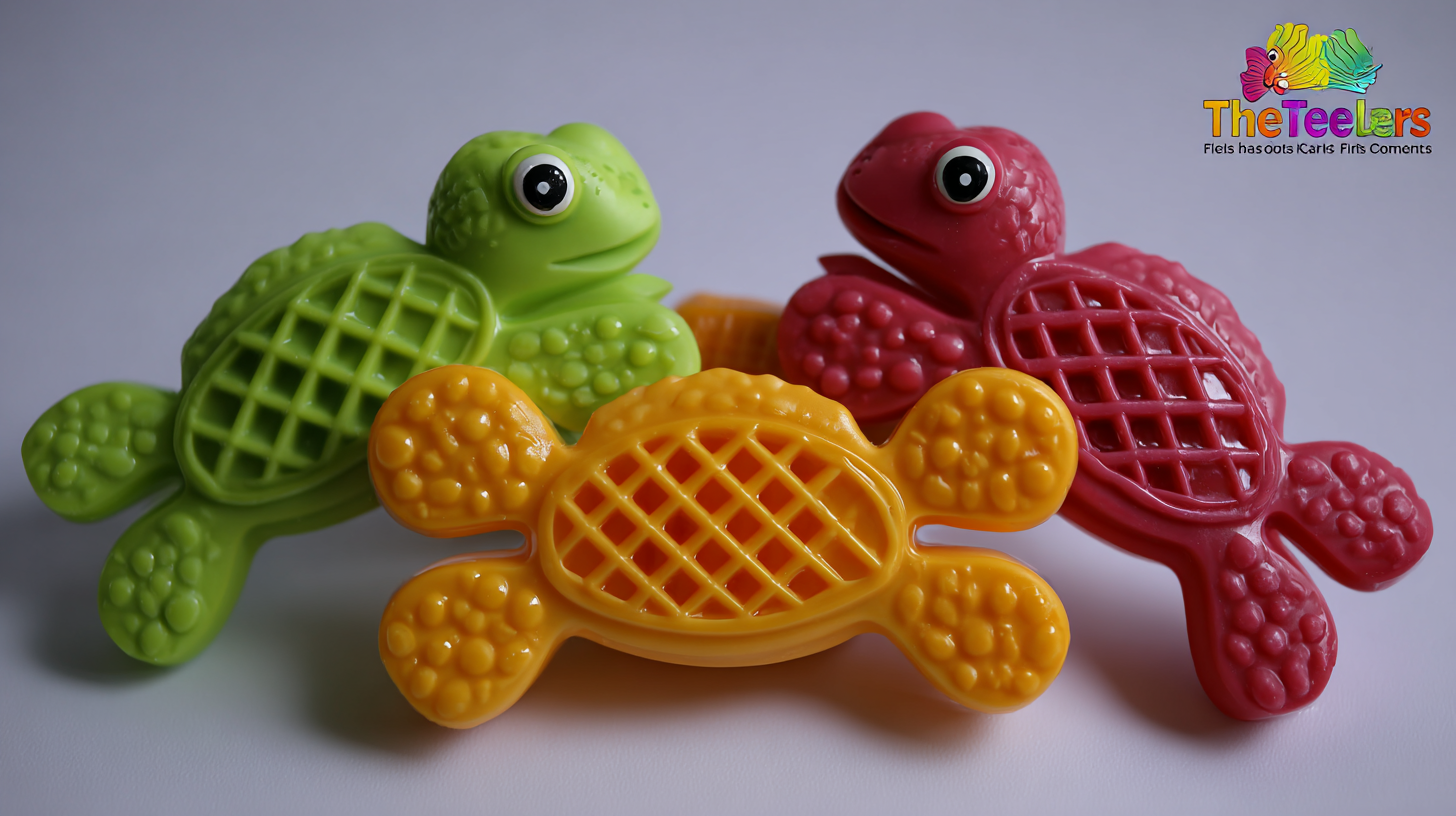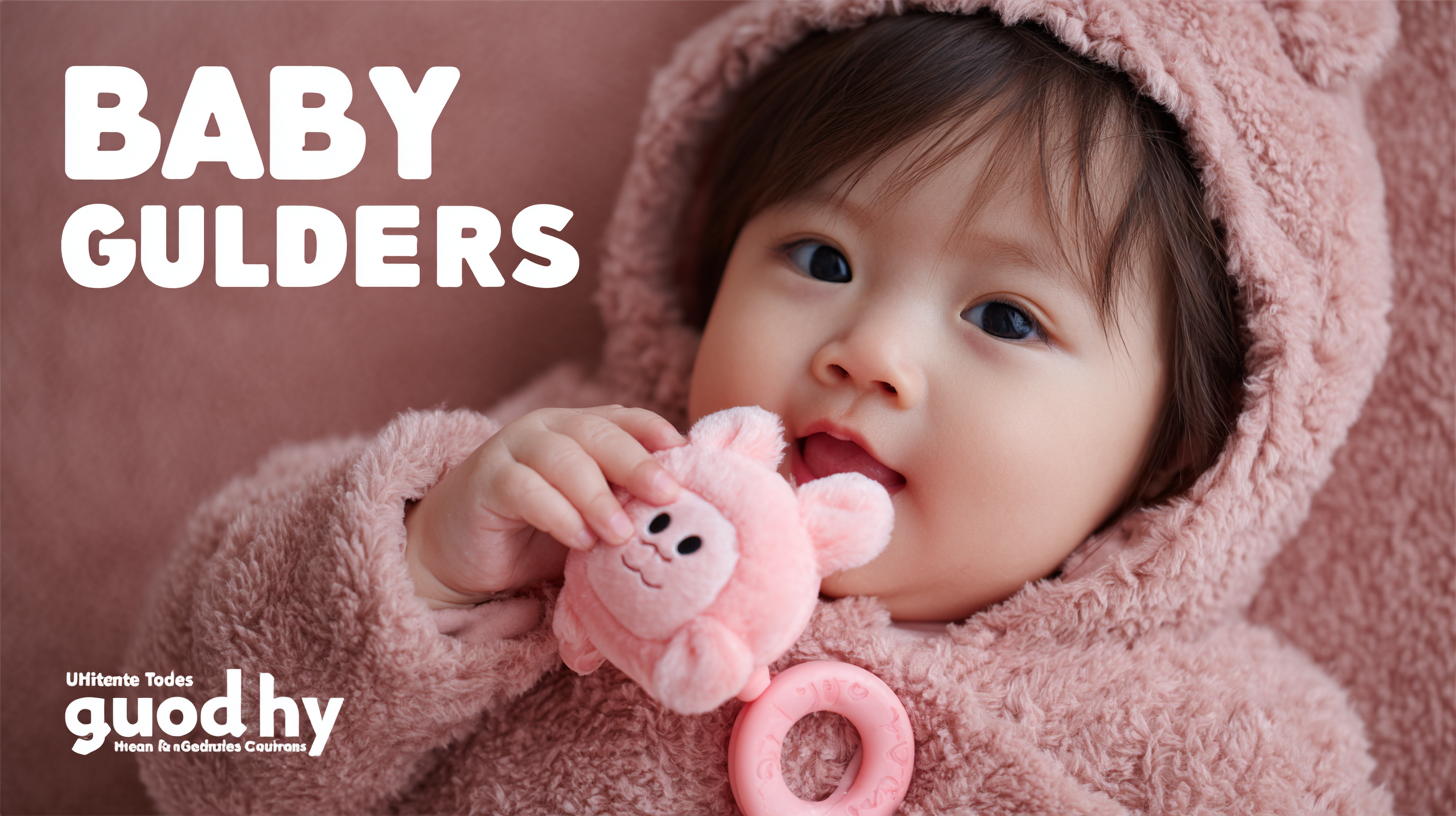
Ultimate Guide to Choosing the Best Baby Teethers for Global Consumers
In today's market, finding the perfect baby teethers can be overwhelming for new parents and caregivers alike. With an abundance of options available, choosing the ideal teething solution that prioritizes safety, durability, and effectiveness is essential for ensuring that your little one remains comfortable during this challenging developmental phase. This comprehensive guide aims to equip global consumers with the knowledge needed to navigate the diverse landscape of baby teethers, featuring insights from China's leading factories known for delivering exceptional quality products.

By considering factors such as materials, design, and age suitability, parents can make informed decisions that not only soothe their babies' sore gums but also align with the best manufacturing standards worldwide. Join us as we explore the indispensable elements of selecting baby teethers that blend functionality with safety, ensuring your child’s teething experience is as smooth as possible.
Common Issues Parents Face When Choosing Baby Teethers
Choosing the right baby teether can be a challenging experience for parents, given the myriad options available and the varying concerns about safety and effectiveness. A report by the American Academy of Pediatrics indicates that nearly 80% of parents encounter confusion regarding which materials are safe for their infants, particularly with regards to BPA-free plastics and natural rubber. The anxiety surrounding teething discomfort further complicates decisions, as parents often worry whether a teether will adequately soothe their child during this painful phase.
Moreover, the wide variety of shapes, sizes, and textures of teethers can overwhelm caregivers. According to a recent study by Market Research Future, the global baby teether market is projected to reach USD 800 million by 2025, indicating a growing demand for innovative designs. Parents face the issue of ensuring that the chosen teether not only meets safety standards but also promotes healthy oral development. Experts recommend looking for products that are ergonomically designed and have appropriate textures, as these features can significantly enhance a baby's teething experience and provide relief.
Ultimate Guide to Choosing the Best Baby Teethers for Global Consumers - Common Issues Parents Face When Choosing Baby Teethers
| Teether Type | Material | Key Features | Common Issues | Recommended Age |
|---|---|---|---|---|
| Silicone Teether | Food-grade silicone | Soft, flexible, easy to clean | Can be too soft, may break easily | 3 months+ |
| Wooden Teether | Natural wood | Non-toxic, durable | Can splinter if not treated | 6 months+ |
| Cold Teether | Gel-filled bladder | Soothing when chilled | Requires refrigeration, can leak | 4 months+ |
| Rubber Teether | Natural rubber | Soft, safe to chew | Can retain odors, harder to clean | 6 months+ |
| Multi-functional Teether | Combination of materials | Includes toys, textures | Can be complex, harder to clean | 3 months+ |
Understanding Different Materials Used in Baby Teethers
When it comes to baby teethers, the material used plays a crucial role in both safety and comfort for your little one. Common materials include silicone, wood, and rubber, each offering unique benefits. Silicone teethers are particularly popular because they are soft, durable, and easy to clean. They often come in a variety of shapes and colors, making them visually appealing for babies while providing soothing relief during teething. Additionally, silicone is non-toxic and free from harmful chemicals, ensuring peace of mind for parents.
Wooden teethers, on the other hand, boast natural properties that many parents appreciate. Typically made from untreated hardwoods, these teethers are sturdy and can withstand the wear and tear of enthusiastic gnawing. They also provide a unique sensory experience with their texture and natural aroma. However, proper care is essential to maintain their hygiene, as wood can absorb moisture and bacteria. Lastly, rubber teethers offer a nostalgic appeal, reminiscent of classic baby toys. They are often made from natural latex, providing a soft yet resilient surface for babies to chew on. As you select a teether, understanding the materials and their implications is key to ensuring your baby's comfort and safety.
Material Comparison of Baby Teethers
The Impact of Design on Baby Teething Comfort and Safety
When choosing the best baby teethers, design plays a crucial role in ensuring both comfort and safety for teething infants. As the global baby teether market is projected to reach $490 million by 2025 and expand to $820 million by 2033, parents are more conscious than ever about the products they select for their little ones. It’s essential to understand that not all teethers are created equal; some may pose risks such as choking hazards or contain harmful materials.

Tips for selecting safe teethers include checking for age-appropriate designs and ensuring they are made from non-toxic, BPA-free materials. Look for options that offer various textures to soothe sore gums effectively. Additionally, consider the ease of cleaning and the overall durability of the product to ensure it can withstand enthusiastic chewing without breaking apart.
Parents should also consult with dental professionals who can provide insights into the potential risks associated with certain teething products. Dental experts emphasize the importance of product safety, urging parents to prioritize well-designed options that are free from sharp edges or small parts. By taking these factors into account, you can help ensure a smoother teething experience for your baby.
How to Identify and Avoid Harmful Chemicals in Teething Products
When it comes to choosing baby teethers, safety should always be a top priority for parents. Many teething products on the market are made with materials that can contain harmful chemicals such as BPA, phthalates, and heavy metals. These substances pose potential health risks, including hormonal disruptions and developmental issues. To ensure that you are selecting a safe option for your little one, it's important to meticulously read labels and research the brands you are considering.
One effective way to identify harmful chemicals in teething products is to look for certifications and testing standards. Products that are labeled as "non-toxic," "BPA-free," and "phthalate-free" have undergone scrutiny for safety compliance. Additionally, look for teething toys made from organic materials, such as natural rubber or food-grade silicone, which are less likely to contain harmful additives. Another helpful tip is to consult reviews and recommendations from trusted parenting forums. Engaging with other parents can provide insights into which brands have proven to be reliable and safe for teething infants, ultimately ensuring peace of mind during this crucial developmental stage.
Expert Recommendations for Selecting the Best Teether for Your Baby
When it comes to selecting the best teether for your baby, expert recommendations play a crucial role in ensuring the safety and comfort of your little one. Experts suggest looking for teethers made from non-toxic materials, such as food-grade silicone or natural rubber, which are not only safe for babies to chew on but also free from harmful substances like BPA and phthalates. Additionally, teether designs that have different textures can provide a satisfying sensory experience for babies, helping to soothe their gums during the teething process.

Another important aspect is the size and shape of the teether. Experts recommend choosing teethers that are easy for tiny hands to grasp, which encourages independence and helps develop fine motor skills. Some teethers are designed with ergonomic shapes that fit perfectly in a baby's mouth and can target specific areas of discomfort. Moreover, many parents find that chillable teethers offer extra relief, as the coolness can soothe inflamed gums. Ultimately, consulting with pediatricians or child development specialists can provide additional insights, ensuring that parents make informed decisions tailored to their baby's unique needs.
